QuestionI have a small red ear water turtle. I have had him for almost a week and he wont eat.Also, there is some kind of white stuff over his eyes. My sister said his eyes werent open yet but i wasnt sure.thank you.
AnswerYou don't tell me the size or age of the turtle, but with the conditions you describe, I can guess that it is younger.
Whenever I hear questions like this the first thing that crosses my mind is that we should review the basic care guidelines for taking care of turtles.
You see- MOST people do not know how to take care of turtles, and there is a LOT of bad information floating around. Even in good pet shops, you can get bad information or bad food and supplies.
Eye infections, for example, usually indicate dirty water and a turtle that is not hungry is either ill or very uncomfortable.
The good news is that by providing the right kind of care, your turtle should quickly recover, and with a little specialized care, even the eye infection should clear up quickly.
There are many good care sheets available on-line, starting with my favorite site- www.tortoise.org.
However, just a few basics to get you started:
WATER: Turtles need clean, warm water, and enough of it to get a lot of exercise in. Even a very small turtle needs about 5 gallons of water (not a half-filled 5-gallon tank) to swim in so it can develop properly. It can be difficult to keep the water clean, so you usually need a pretty big filter.
BASKING: Red-ears are 'pond turtles'- they spend a good chunk of each day basking in the warm sunlight. You'll need to provide some warm sunning spots and something smooth (but easy to climb) for it to crawl out on. Ideally, you'll provide 2-3 different spots so it can pick and choose. The green plastic 'lily pads' don't work for turtles once they get a few months old.
LIGHT: Turtles need real sunlight for a variety of benefits- the problem is that the stuff they need in sunlight does not penetrate glass or most plastics. Ultra-violet light, for example, helps provide Vitamin D.
WARMTH: Turtles, like all reptiles, prefer to have a choice between warmer and cooler locations. The warm spot should be around 80-90 degrees Fahrenheit and the coolest spot should be no lower than about 65 (a bit cooler at night is OK).
FOOD: Smaller turtles benefit from 'meaty' fish food- small worms, small fish, trout chow, high-quality turtle food, etc. As red-ears get bigger, they start eating more vegetarian foods. They do not eat, and will not be healthy with a diet of fly eggs or wings, ant eggs, dried ants, hamburger, or lettuce.
Once your turtle is in a comfortable, clean cage that suits its needs, I bet its appetite returns quickly. Also, once the basic care issues are back on track, you can usually find some medicated eye drops for the eye infection.
Good luck, and I hope you enjoy your turtle!

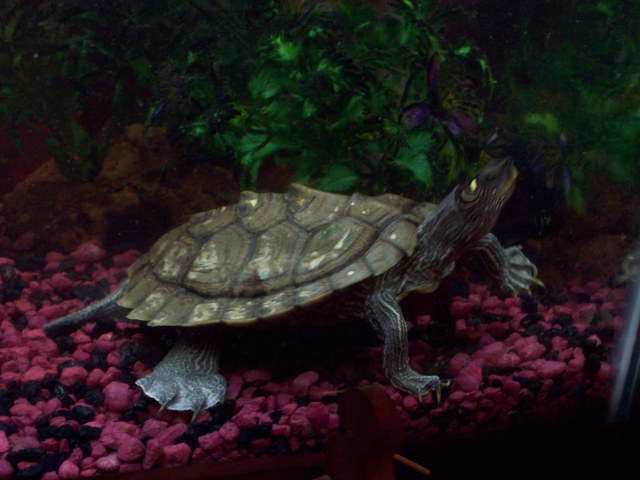 Trying to figure out what Species my
QuestionQUESTION: Trying to figure out what Species my
Trying to figure out what Species my
QuestionQUESTION: Trying to figure out what Species my
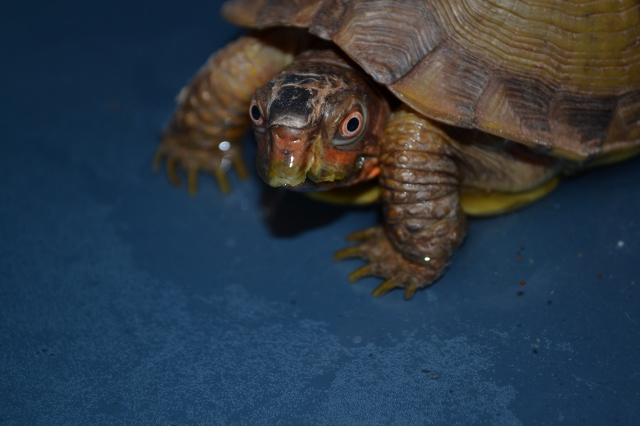 tortoise information
Question
Tortoise Tortoise
Hello! We recei
tortoise information
Question
Tortoise Tortoise
Hello! We recei
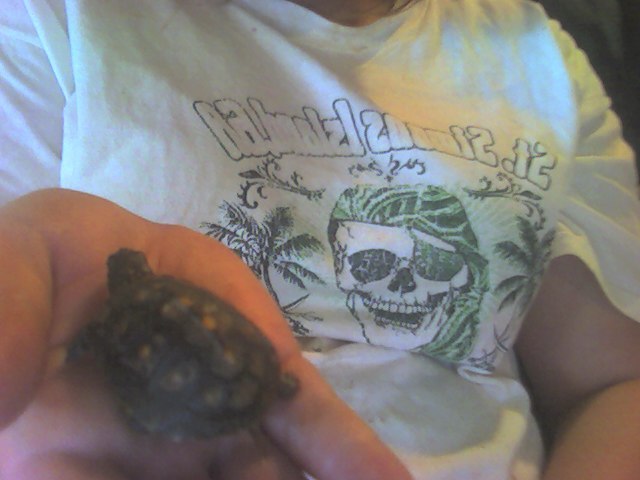 Tortoise or Turtle?
Question
The turtle or tortoise
I recently found a baby
Tortoise or Turtle?
Question
The turtle or tortoise
I recently found a baby
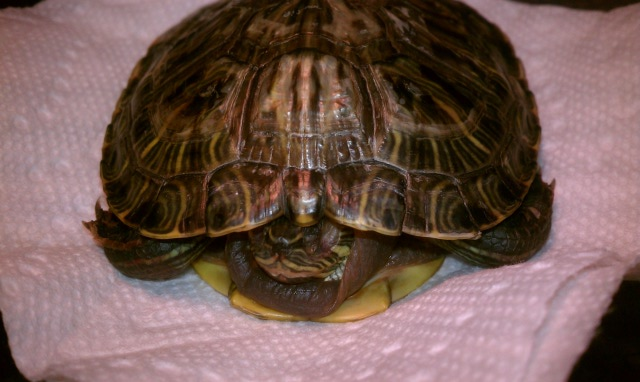 RES turtle being treated for Septicemia
QuestionQUESTION: Hello,
I have a RES turtle being tre
RES turtle being treated for Septicemia
QuestionQUESTION: Hello,
I have a RES turtle being tre
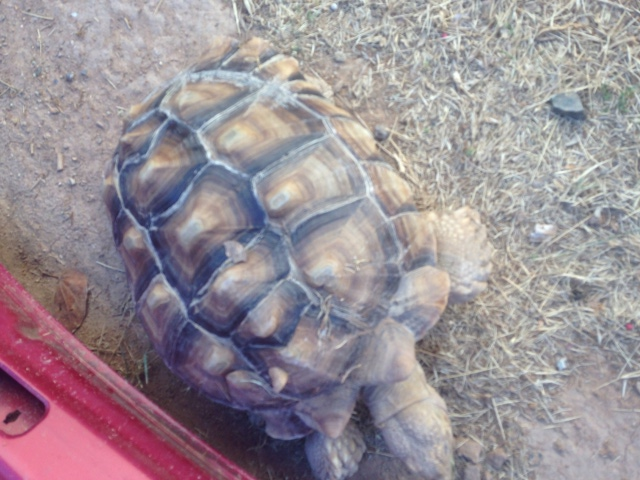 i need to know what kind of tortoise I have
Question
Tortoise
Im interested in buying a new
i need to know what kind of tortoise I have
Question
Tortoise
Im interested in buying a new